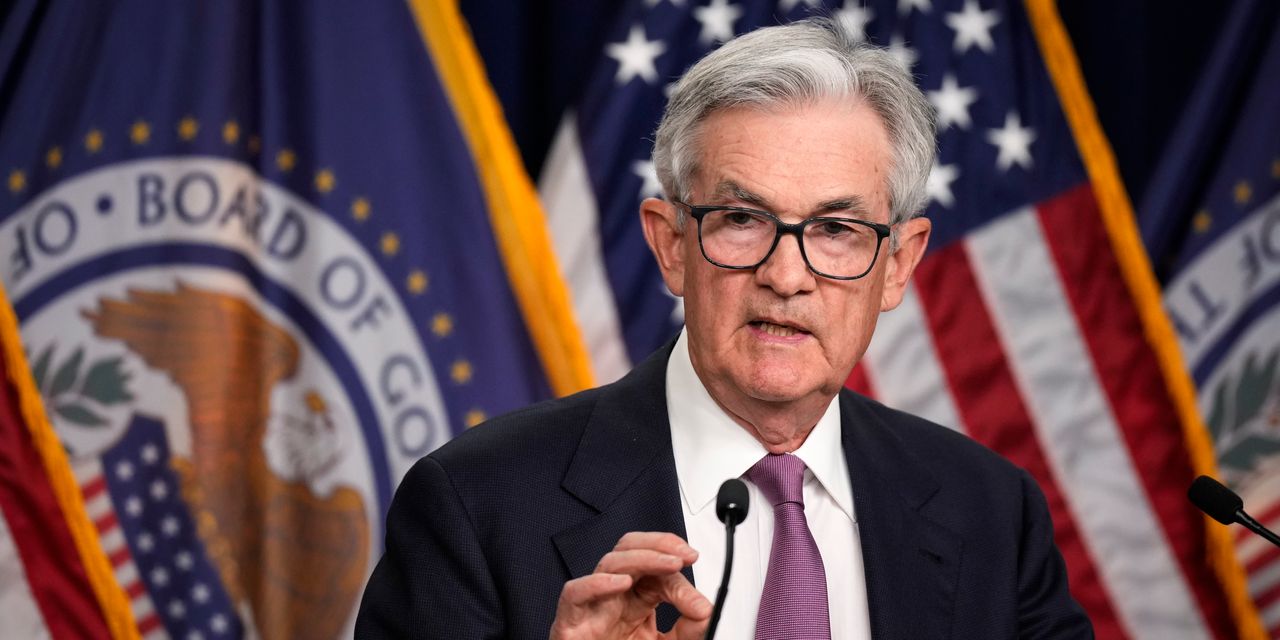Decoding where the Federal Reserve is headed in its fight to rein in inflation may require choosing whether to put more stock in the central bank’s actions on Wednesday, or its words.
The Fed’s policy-making arm opted to hold interest rates steady for the first time in 15 months, pressing pause on its aggressive monetary policy tightening path as it evaluates the impact its 10 rate hikes are having on the economy.
The decision signals, at least to some extent, the central bank feels it has made progress on inflation, and is looking to slow its pace of tightening to avoid pushing the economy into a recession.
But the message was undermined by strong signaling from Fed officials that rate hikes are coming—likely two more this year, according to the Fed’s updated Summary of Economic Projections. The median expectation for where officials now see the federal-funds rate landing by the end of this calendar year climbed to 5.6% in June, up from 5.1% in the March forecasts, implying another 50 basis points of tightening from the current level of 5% to 5.25%.
Their mission, in other words, is very much not yet accomplished. They are taking a breather, and then it is straight back to work.
“If you look at the core PCE inflation overall, looking at it over the last six months, you’re just not seeing a lot of progress,” Chairman Jerome Powell told reporters in his post-meeting press conference. “We have to get inflation down to 2%—and we will—and we just don’t see that yet.”
The disconnect between the Fed’s decision to pause and Powell’s emphasis there is more work to do sent divergent messages to investors, who had been braced for the central bank to hold rates steady but were thrown by the suggestion of another two rate hikes this year. And it begs the question of where the central bank is truly headed moving forward. If there were really a need for more tightening, why not do it now?
Powell, for his part, regularly returned to the notion that inflation has further to fall and the labor market remains far stronger than anyone expected. Perhaps most tellingly, he at one point referred to the decision not to raise rates in June as a “skip”—a term that would suggest another hike is coming in July—and then corrected himself. “I shouldn’t call it a skip,” he said.
“His tongue slip mention of a ‘skip’ indicates a rate hike is nearly guaranteed in July,” Greg Daco, chief economist with EY-Parthenon, wrote. “And it likely explains how Powell managed to ensure a unanimous vote in favor of a hold despite diverging views amongst policymakers.”
The counterargument, however, is that the Fed could be talking a bigger game than it expects to play, and the rate-hike cycle really is almost finished. If officials really believe they need another half-point of tightening this year, then they should have raised rates on Wednesday—unless they are hoping their tough talk can do some of the financial tightening for them.
Some Fed officials could be hoping the decision to adjust rate-hike forecasts upward “will lead to meaningful tightening in financial conditions that will in turn act as a brake on the pace of economic growth and inflation,” wrote Richard Moody, chief economist with Regions Financial. And they might not necessarily believe, he added, “that further rate hikes will ultimately be required.”
“The question remains whether the reality will live up to the rhetoric,” Moody wrote.
Other analysts were more direct. “Don’t believe the hype,” TS Lombard’s Steven Blitz wrote. “Take this hawkish skip for what it is, surface noise on a long playing record.”
Write to Megan Cassella at [email protected]
Read the full article here


